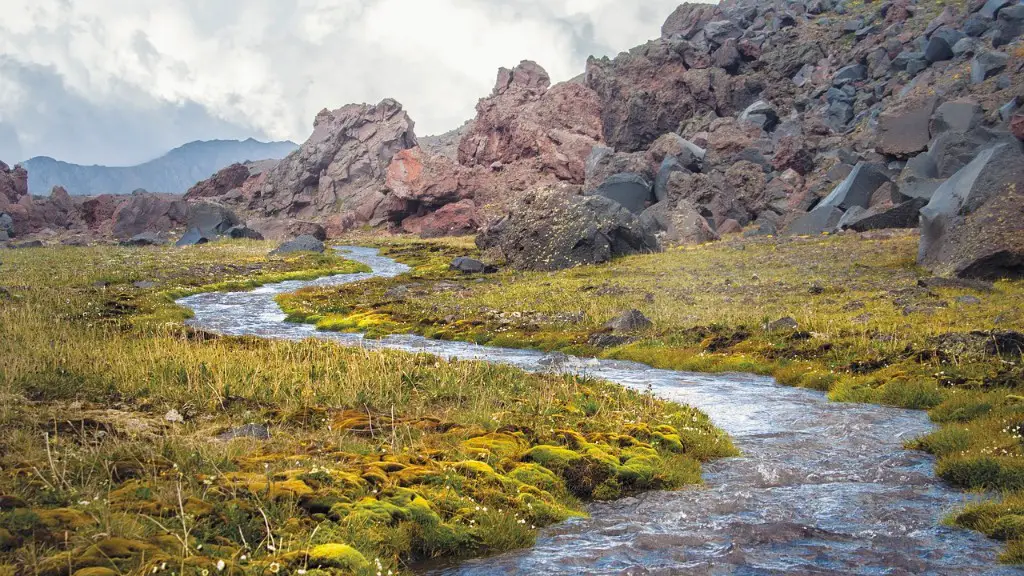Farming has an indelible impact on the Mississippi River – both positive and negative. Perennially, farms have been a part of the Upper Mississippi River’s landscape, beginning with Native Americans’ traditional agricultural practices. Nowadays, a farmer’s influence is more strongly felt around the banks of the largest river in the United States.
The first impact of farming is a positive one, in the form of maintaining sustainable land. A sizeable chunk of the Mississippi’s tributaries lie in areas for growing crops, and those farms provide a natural buffer for the river, anchoring the soil and protecting it from sediment and nutrient runoff.
In order to receive the full suite of protective ecosystem services that an agricultural land provides, there do need to be certain practices in place to perpetuate these desirable benefits. Chiefly, farmers need to followno-till or minimum tillage practices, which prevents soil erosion and subsequent sediment and nutrient leaching into water systems.
Secondly, the riverside agricultural land can also create a space for local species of animals. When there’s a suitable habitat for species endemic to the Mississippi River, it can help maintain biodiversity in the region. This is achieved by cultivating specific crops with diverse root systems and timing planting to optimize bird and animal activity. By doing this, the Mississippi’s wildlife can thrive if the river is managed accordingly.
Fertilizer Runoff
On the flipside, farming has a negative impact on the river. Nutrient inputs from fertilizer usage is a blight on water resources near farms. When excessive amounts are leached into the ground and subsequently are transported by groundwater or runoff, it can potentially cause excessive growth of aquatic vegetation, algae blooms and hypoxia (low oxygen levels) in the water.
These algal blooms deplete oxygen from the water, creating “dead zones,” where fish either die from a lack of oxygen or swim elsewhere. To reduce the impact of fertilizer runoff, farmers need to match the preciseness of fertilizer and time of use for particular crops, and alternatively use alternative natural inputs instead.
Aside from extraordinary fertilizer run-off, there’s also another lesser-known farming practice that affects the Mississippi’s river water quality – irrigation. Irrigation plant turn the water to land, so water’s flow is heavily impacted and even diverted, which can result in a long-term decrease in the water volume both upstream and downstream of the site.
In the U.S., the federal government provides subsidies and regulations to protect the Mississippi’s water, and incentivize and monitor farming practices that benefit the river. This is primarily accomplished through the Agricultural Conservation Easement Program (ACEP), which provides financial resources to help protect agricultural lands along the Mississippi River and other water sources.
The United States Army Corps of Engineers (USACE) has also assumed an increasingly important role in the development of the Mississippi River. The ongoing ten year project is designed to enhance navigability, sediment management, and balance safe navigation with environmental concerns in the river.
The overall aim of the project is to monitor cruising conditions of the deep draft vessels, as well as construct systems to mitigate the potential flooding. Included in the project’s measures are the construction of waterway turnaround levees, oyster beds, shoreline nourishment projects, and floodplain wetland restoration.
USACE also intends to restore an ecosystem to the area, increasing the health of the water, preserving different species and maintaining the area. Restoration begins with assessing ecosystems and assembling an optimum water flow and sediment transfer throughout the river.
For the navigation aspect, USACE is also taking into consideration the effect of the Mississippi’s water transportation on the environment. For example, the project includes an Environmental Management System involving methods such as the use of specific structural material, controlling and monitoring dredging activities, and extensive stakeholder engagement.
Ecosystem Services
Farmers, fishermen and other people who work around the Mississippi River rely on the ecosystem for their livelihood. The Mississippi River is a powerhouse in terms of ecosystem services. The benefits include water supply, water purification from natural sources, food production, nutrient cycling, carbon sequestration, recreational services, flood control, shoreline stability and more.
With these essential services, the preservation and management of the agricultural lands along the Mississippi are also essential. If the farms along the Mississippi are not managed responsibly, there will be a significant decline in ecosystem services and ultimately a decline in the quality of life.
When the agricultural lands surrounding the river are well-kept, they actually use practices to take advantage of the ecosystem services. To reduce runoff and water pollution, farmers can use techniques such as riparian buffers, crop rotation, terracing, nutrient management, and conservation tillage.
All of these activities also serve as a barrier to sediment loss through runoff and this helps to prevent the river’s shoreline from eroding. The attractiveness of the natural resources along the river for recreation and tourism also increases.
Strategies for Protection
The Mississippi River’s future is uncertain. To sustain and maintain the river’s stunning landscape and robust ecosystem, different strategies need to be employed. It’s vital that local farmers implement best practices related to their land use, such as conservation tillage, water management and cover cropping.
Farmers can also help protect this river by properly disposing of agricultural runoff, properly storing fertilizers and pesticide and correctly timing fertilizer use. Moreover, conservation easements and farmland water management plans can help protect the waterway from runoff and restore natural habitats.
Overall, protection is a priority – as maintaining the quality of this highly valuable river is an obligation. Farmers, alongside their state governments, federal authorities, non-governmental organizations, locals and other stakeholders, can unite and collaborate to provide the most beneficial solutions.
Mississippi River Commission
The Mississippi River Commission (MRC) is an agency that promotes stewardship over the Mississippi River and uses sound principles of engineering to advance the health of this important river. As well as engineering and dredging activities, the MRC provides education and awareness on the value of the river and how to sustain its health.
Moreover, the MRC also assists states with flood risk management programs and infrastructure improvement to reduce the risk of future floods. This is a crucial step to calculating maximum economic benefits, while simultaneously preserving the natural environment. Overall, their contribution towards Mississippi’s water quality is invaluable.
Ultimately, from a more holistic angle, everyone must take responsibility for the health of the Mississippi River and undertake a comprehensive approach to protect it. Over 82 million people live in the Mississippi Watershed, and preserving the river requires a joint effort from all of its people and stakeholders.
Restoring Healthy Habitats
Restoring healthy habitats and landscapes is key in protecting the Mississippi River’s continued health and vitality. Native Plants are a good start. The use of native plants alongside roads, trails, water courses, and open spaces can minimize the impact of farming on water quality by keeping sediment, nutrients and pesticides from entering the river.
Additionally, farmers can also initiate buffer systems that allow clean water to pass through. These buffers are made of trees and other kinds of vegetation that can help filter contaminants out of the water before they reach the main channel. This helps to reduce runoff and sediment load while providing valuable habitat to animals and birds.
Wild mushrooms, native edible plants, and other relevant species can also be planted in degraded lands to incredibly increase the ability of the soil to retain nutrients and water, which will reduce runoff and filter contaminants out of the water.
Furthermore, rain gardens and stormwater management systems provide an added safeguard to prevent runoff from making it to the Mississippi. These practices focus on slowing and retaining runoff, in order to allow it to soak into the ground and be absorbed fully into the water table.
Raising Awareness
Last but not least, raising awareness about the importance of the Mississippi River and its ecosystem is paramount for its longevity. Education and public engagement can help to engage stakeholders and communicate what practices should be adopted by all. This can range from teaching children in school, collaborating with local government, and reaching out to adults with educational curricula.
Public funds can also be established to fund river restoration and conservation projects around the watershed, as well as small grants to teach farmers how to properly manage the lands around the river. This will help encourage farmers to use the best practices and increase their efficiency in producing the highest possible yield with the least negative impact.
Ultimately, all of us, whether we live near the Mississippi or not, rely on its ecosystem services, of which agricultural lands play an essential role. Everyone should take responsibility for the maintenance and protection of this vital river and pursue every possible solution to reduce pollution and improve the water quality of the Mississippi.





